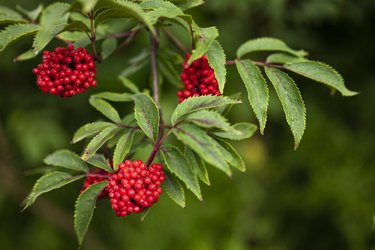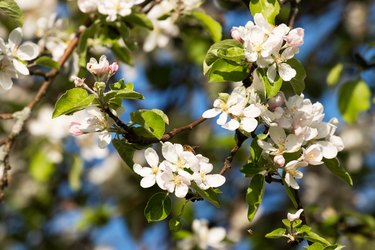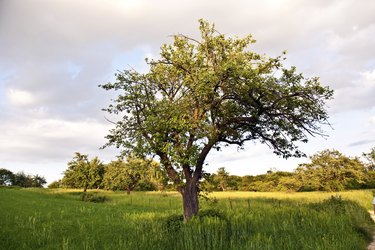There is a lot of genetic similarity between crab apples and regular apples. Both produce flowers and fruit in the spring. The flowers of the crab apple tree can be very pretty, but the fruit is usually smaller and not as tasty as apples from other trees. Though the sourness of the fruit may taste awful, they have been eaten for centuries.
Crab apples are a variety of small, tart wild apples that grow on short, twisted trees. Though they closely resemble regular apples, their extreme sourness and bitter taste often lead people to assume they must be poisonous. However, the notion that crab apples are toxic is a common misconception. In reality, these tiny apples are not inherently dangerous.
As an avid forager and nature lover, I was curious to get to the bottom of this crab apple confusion Are crab apples actually poisonous, or is this just a myth? Let’s examine the facts about crab apple toxicity and safety
Not Toxic, Just Unpalatable
The primary reason people wrongly assume crab apples are poisonous is simply because they taste so terrible! With an extremely sour astringent flavor, crab apples are essentially inedible when raw. People naturally equate this repulsive taste with the idea the fruit must be toxic.
In fact, crab apples are not poisonous at all to humans. They contain the same nutrients as regular apples, just in a much smaller package. Crab apples have fiber, vitamin C, antioxidants, and beneficial plant compounds. So while they may pucker your mouth, they won’t actually harm you if eaten.
Avoid Just the Seeds and Stems
While the crab apple flesh is perfectly safe, the seeds do contain trace amounts of a compound called amygdalin. This gives rise to small quantities of cyanide when metabolized, which is toxic to humans in large doses.
However, the amygdalin levels are very minimal, and you would have to eat a huge amount of crab apple seeds to make yourself sick. Swallowing a few seeds accidentally causes no harm. Just be sure to avoid intentionally eating the seeds and stems, as you would with a regular apple.
Pets Are More Vulnerable
Dogs, horses, and other domestic pets are at higher risk of toxicity from crab apples. The difference is that animals are more likely to ingest crab apples in bulk, seeds and all. The seeds and stems also pose more of a choking hazard for pets.
So if you have pets that roam where crab apples grow, take precautions to keep them away from the trees. The fruits may not be poisonous to pets, but large quantities could potentially cause adverse effects. Monitor your animals closely if crab apples are accessible.
Look-Alike Dangers
One final risk is mistakenly eating a poisonous look-alike fruit instead of a true crab apple. Always confirm the identity of any wild fruit before sampling it. Poison sumac and chokeberries can resemble crab apples, but consuming them can make you very sick.
When in doubt, consult an expert foragers or botanists who can positively identify the fruit. Only eat wild plants you’re 100% certain are safe and not toxic look-alikes.
Why So Sour?
If they aren’t toxic, why do crab apples taste so unpleasant? Wild crab apples evolved bitter compounds as a defense mechanism against being eaten by animals. This ensured the plant’s survival and propagation.
Over time, humans cultivated and bred some crab apple varieties to make them larger and sweeter. But most true wild crab apples retain their extremely tart flavor profile that deters animals from devouring them.
Culinary Uses
Though almost inedibly sour raw, crab apples can be cooked and sweetened to make delicious jellies, jams, sauces, and baked goods. Their high natural pectin content gives crab apple mixtures a wonderfully thick texture.
Popular recipes include crab apple jelly, chutney, fruit leather, pie filling, and even cider vinegar. Some people enjoy infusing crab apple vinegar with herbs to create a unique salad dressing.
Nutrition Benefits
Despite being shunned raw, crab apples offer a similar nutrition profile to regular apples. Four small crab apples provide fiber, vitamin C, copper, and antioxidants.
The bright red and yellow peels are rich in disease-fighting flavonoids. So consuming crab apples can positively impact digestion, immunity, skin health, and heart health.
Apple Seed Safety
How many apple seeds are dangerous? For an average 150 pound adult, it would take around 200 crushed seeds to reach toxic amygdalin doses. So while it’s smart to avoid intentionally eating apple seeds, accidentally swallowing a few is not harmful. Just don’t make a habit of chewing the seeds.
Are Other Seeds Toxic?
Apple seeds contain amygdalin like apricots, almonds, peaches, and cherries. But again, toxicity requires eating high volumes of crushed seeds. In moderation, these seeds pose little risk, though children are more vulnerable.
What About Crab Apple Trees?
Crab apple trees themselves present zero toxicity dangers. The bark, leaves, roots, and blossoms are perfectly safe to be around and handle. In fact, many people enjoy planting crab apple trees for their stunning spring flowers and decorative fruits. Just be mindful of falling apples if you have pets.
Final Word
So rather than being poisonous, crab apples are just unpalatably sour! With some sweetening, they can be transformed into a tasty treat. Just be sure to remove the seeds and stems first. And when foraging, always confirm identities before eating wild plants. With caution, crab apples can be safely enjoyed without toxicity concerns.
Common Questions about Crab Apples
What is the difference between regular apples and crab apples?
Crab apples are smaller, more sour/bitter, and grow on shorter twisted trees compared to larger, sweeter, grafted apple tree varieties. Both belong to the same Malus genus.
Why are crabapples sour?
Wild crabapples evolved bitter compounds to deter animals from eating them, ensuring their survival. Cultivated apples were bred to be sweeter and larger.
How do you use crab apples?
Crabapples work great cooked into jams, jellies, sauces, vinegar, baked goods, etc. Their high pectin gives a thick texture when cooked with sugar.
What animals are at risk from crab apples?
Pets like dogs and horses are more vulnerable to toxicity if they ingest lots of seeds. The fruits may cause choking or blockages too.
Can you eat crab apples raw?
While technically edible raw, most crab apples are extremely sour and unpleasant to eat without cooking. Baking or boiling them first is recommended.
How do you identify a crab apple?
Crab apples grow on small, twisted trees and are generally less than 2 inches wide. Cutting them open reveals a core and seeds like a regular apple, rather than a pit.

Learn About Crab Apple Fruit
Crab apples resemble commercial apples, but they are usually much smaller. In the wild, they tend to be yellow-green in color, but some are red when they ripen. All crab apple fruit are less than 2 inches in diameter.
Anyone taking a large bite of the small crab apple will quickly discover their mistake. The fruit on a crab apple tree is not sweet like a regular apple. Instead, it tastes sour or bitter. Some crab apples are not palatable without first cooking and sweetening the fruit. The fruit makes an excellent jelly and has been roasted for centuries in Europe to eat with meat.



Meet the Crab Apple Tree
Video of the Day
The crab apple tree, Malus sylvestris, is not only in the same genus as the apple tree, but it is also one of the wild apples that are grown in stores. Like commercial apple varieties, crab apple trees can vary widely in appearance. All tend to be short with a spreading canopy of an irregular, rounded shape. Crab apples usually have gray bark and branches that are twisted or gnarled. The branchlets often get spines. This makes them look like crabs, which may be why they’re sometimes called “crab apples.” “.



Video of the Day
Even though they look “crabby,” crab apples can be very pretty. In the spring, they have lots of flowers that are lacy white or shades of pink or red. Some types put on a different show in the fall when their leaves turn fiery colors, but not all crab apple trees do. Most crab apple trees also produce crab apples.
